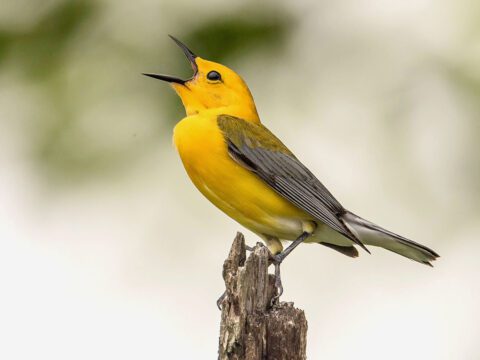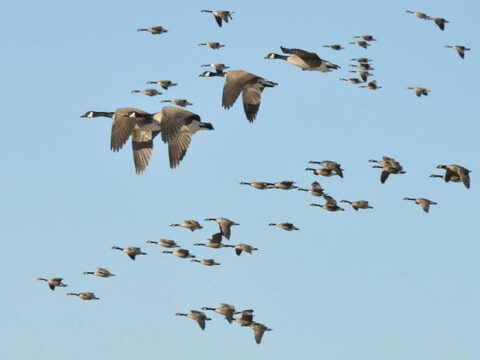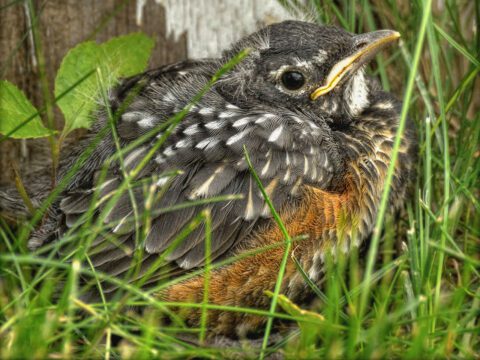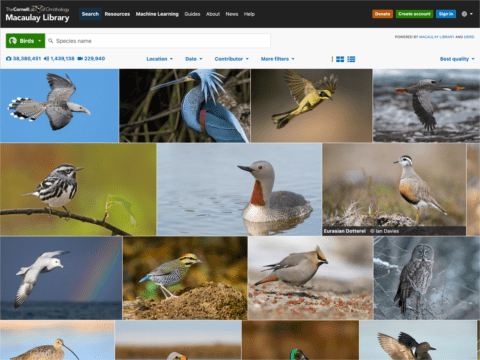Parrots in Pine Trees: A Belize Conservation Story
By Katie Blake January 7, 2011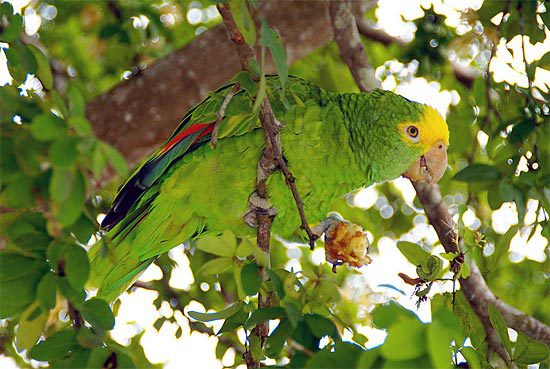
After months of tropical fieldwork, I’ve come to appreciate the power of rain. The cool downpour feels blissful as I let it fall on my unhooded head down to my toes, which squish water warmly around my woolen-socked feet. My two Golondrinas teammates and I are walking toward the Hill Bank Field Station headquarters on a day’s break from our work with Mangrove Swallows on the New River Lagoon, located on the Rio Bravo nature reserve in northwestern Belize.
It’s difficult to tire of the reflection of the wide sky over the lagoon or the multitude of jungle trails dripping in anticipation of a jaguar sighting and sounds of motmots. But on today’s visit to Belize’s pine savannah there’s tall dry grass, warm air laced with an overwhelming fragrance of pine, and the chance to glimpse one of the pine savannah’s most interesting species, the Yellow-headed Parrot, an endangered species that occurs in Mexico, Belize, Guatemala, and Honduras. Although we sometimes catch fleeting glimpses (and more often hear) pairs of Yellow-headed Parrots flying close to our sleeping quarters in the reserve, today we saw at least three pairs in the pine savannah. Straining our necks to see them perched high in the pine trees, the sightings were well worth the trek in the rain.
At the white and green-trimmed ranger headquarters we’re met by Rufino. He’s a warm man full of colorful stories of encountering the red lion (puma) and tiger (jaguar). His gentle nature is balanced with his authority as head ranger of Hill Bank. He greets us at the door and starts the water for tea. Soon we are met by two other visitors, Sarah and Junior, who are juvenile Yellow-headed Parrots.
It is love at first sight. They fly over to explore me, sitting on my shoulder and picking at my hair. I am pretty much sold with their soft cooing. It is no wonder these birds are highly sought after for the pet trade (where they are known as Amazon parrots). They have bright beautiful plumage and impeccable abilities to mimic human speech. Sadly, this charm has been one of the leading causes of their decline. According to BirdLife International, around the mid 1970s, these birds began being aggressivley pursued for the illegal pet trade. Combined with habitat loss, populations of these birds have suffered dramatically, currently leaving about 7,000 individuals left in the wild.
The pet trade, indirectly, is how Sarah and Junior got to taking up temporary residence at the ranger´s station. They were found at just a couple of weeks old during a ranger’s patrol one night, apparently having been dropped by fleeing poachers. With permission from Programme for Belize, the agency that oversees the Rio Bravo Conservation and Management Area, the rangers fed and sheltered the chicks for weeks, a rare task for these rangers. At the time of our visit the chicks had been released to sleep and forage outside. Their chances of survival seemed promising based on their current progress, but it would be months more perhaps before they were strong enough to survive completely on their own in the wild.
Ecologically, the illegal trade of Yellow-headed Parrots threatens important habitat and biodiversity. Poachers often cut down nest trees in order to get the chicks. Because Yellow-headed Parrots nest in cavities of trees, this not only ruins a nest, it destroys habitat for future nests. These habitat stresses are confounded by the species’ breeding biology. Yellow-headed Parrots reproduce relatively slowly, laying on average two to three eggs per year, meaning populations recover slowly.
Programme for Belize has proactively initiated a large recovery project for the Yellow-headed Parrot. Because even protected areas remain vulnerable to poachers, part of the project ensures increased patrolling during the Yellow-headed Parrot breeding season. In addition, a large part of this project has been to garner local support by sponsoring community education programs that stress the importance of the parrot and its habitats. But, like many nonprofit organizations, additional resources and funding are always needed. Find out how you can help the Yellow-headed Parrot by visiting their website.
With education and support Yellow-headed Parrots can remain in the wild where the grasses grow high, where the thick air bears the scent of stoic pine, and where the rains fall hard.
Read more about our efforts conserving Yellow-headed Parrots in Mexico in our magazine, Living Bird; or see the Bird Life International fact sheet for the species.

All About Birds
is a free resource
Available for everyone,
funded by donors like you
American Kestrel by Blair Dudeck / Macaulay Library

